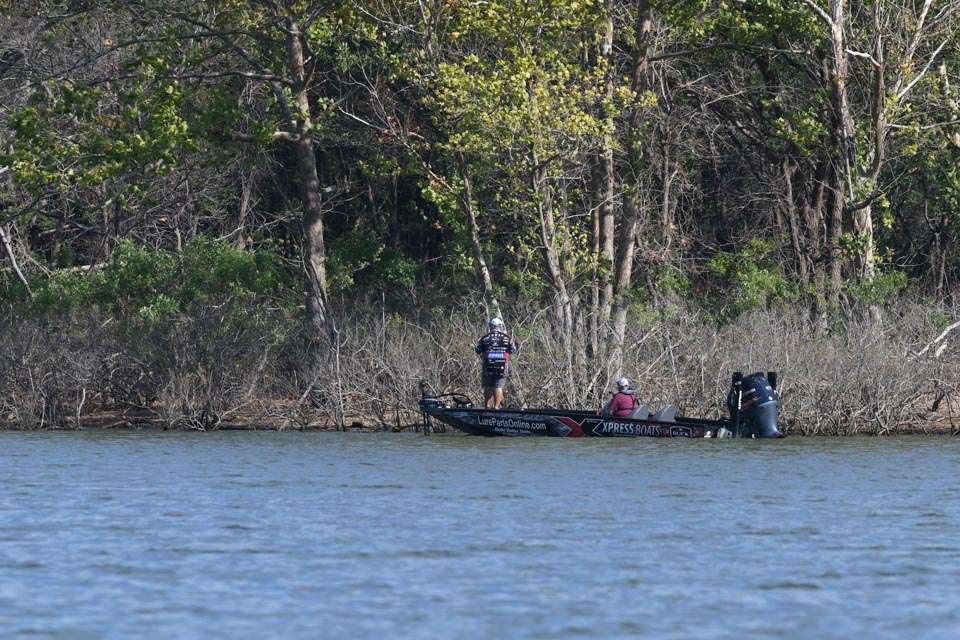
Boat positioning is something you don’t hear much about these days, but it’s critically important for three reasons. First, you need to catch a bass. Second, you need to get it to the boat. Third, you need to catch as many bass as possible from the same spot.
A log or a laydown is a good example of what I’m talking about.
My idea of fishing a log or a laydown is to pick it apart and cover every inch of it. I want to run my lure down both sides of a log as well as hit the top and bottom of it. With a laydown I want to do the same thing and then move inside and fish every limb and fork that’s there. You can’t do that if your boat is in one spot. You have to reposition it.
If you don’t reposition it, you’ll most likely cross the log or the brush when you cast from one side to the other. And, you’ll only fish part of the other side. That’s a lot of unfished water.
The other thing is that even if you do manage to get a bite you’re likely to lose the fish and maybe hang your lure. By the time you jerk and pull it free you’ll have ruined the cover.
The way to solve all of those problems is to take a minute or two and reposition your boat several times so that you can make multiple casts and cover the log or laydown the way you should. It won’t take but a minute or two to do this, and it’s well worth the effort.
The same thinking applies to fishing a dock. You can’t target the outside, inside, left side and right side of a post from one position. And you sure can’t cover everything under a dock from different angles and directions when your boat’s sitting in one place.
Now, let’s talk a minute or two about how to position a boat. To begin with it isn’t necessary to stay way off most spots and make long casts. That’s something that a lot of guys believe, but it isn’t true, at least in most lakes and rivers. Getting up close — and staying quiet — is the better option.
Something else to think about is how to hold your boat steady. In my case that would be with Spot Lock and my Talons. Spot Lock will hold the nose of your boat in one spot but it won’t keep the rear of your boat in one spot. The wind or current will swing it around. This can put your boat closer to the spot you want to fish by as much as 22 feet.
The Talons will hold you steady — if you have two of them and if the water’s shallow enough. But a lot of anglers only have one and one will let the rear of your boat swing around, too, just like with Spot Lock.
One simple way to make the boat movement issue less of a problem is to fish into the wind or the current. However, that isn’t always possible. If you must fish with the wind or current, take your boat swing into consideration when you decide to stop. And, when all else fails fish the old fashioned way. Put your foot on the trolling motor pedal and cast at the same time.
The last thing about all of this I want to mention is that before you make a cast you should dissect the area. Look at what’s there and develop a plan to fish it properly before you ever pick up a rod and reel. I usually start at the outside and work my way in. That way I don’t spoil water I haven’t fished.
One other last thing: Once you’re in the right position make repeated casts to the same spot. It’s amazing how many times a bass will bite the same lure after a dozen casts to the same spot.
Here’s the bottom line: Don’t just throw at a target. Dissect the area, develop a plan and take the time to move your boat into position before you cast. You’ll catch more fish that way, a lot more.





